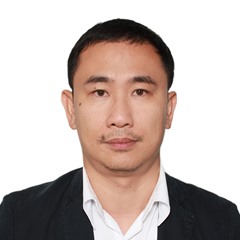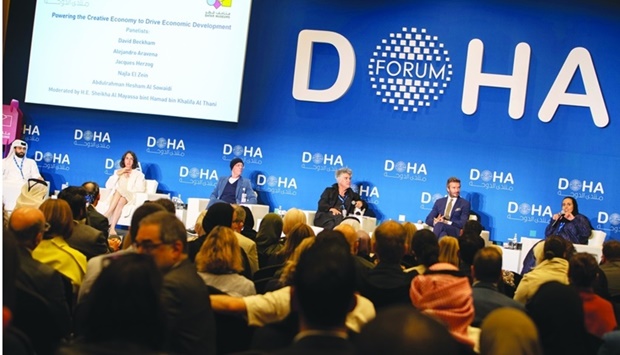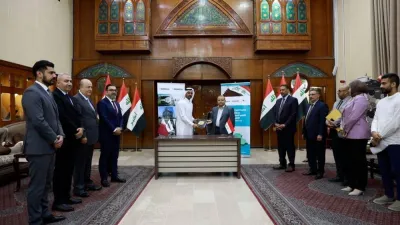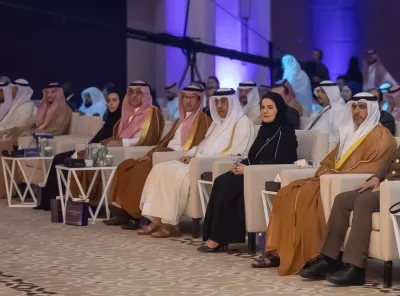Plans to develop three new museums in Qatar are underway as the country aims to further boost its investment in the arts, Qatar Museums (QM) Chairperson HE Sheikha Al Mayassa bint Hamad bin Khalifa al-Thani said at the recently held Doha Forum 2022.
One of these major projects is the Herzog & de Meuron-designed 'Lusail Museum', which will host “the world’s most extensive collection of Orientalist paintings, drawings, photography, sculptures, rare texts and applied arts”.
The four-floor building will feature more than 52,000sq m of galleries, an auditorium, library and dedicated learning spaces, among other sections – marking four millennia of cultural exchange between the East and West.
It also explores the influence of the Middle East and wider Islamic world in the arts.
“The building is a kind of vessel that inside has a complex topography, a clash of fragments of different places and functions,” architect Jacques Herzog said at the panel discussion. “What we have learned during this process, to make space for that aspect of dialogue, is what will make the project important for Qatar and for us.”
Designed by Santiago-based company, Elemental, and with landscapes by Swiss designer Gunther Vogt, the 'Art Mill' is being constructed at the area of the historic Flour Mill in Doha, in the eastern part of the Museum of Islamic Art Park.
“We have never done a museum before, and so we ourselves are examples of the creative economy as something that requires trust,” architect Alejandro Aravena said. “One of its opportunities is that you can bet on people. With the Art Mill, we are trying to trigger some consequences for the local industry even before construction starts.”
“The Art Mill will not just be a perfectly finished object, but an opportunity for young designers, artisans, craftspeople in Qatar to come together to deliver the knowledge they have accumulated and contribute to the building, so that it not only houses a great collection but expands to more popular audiences,” he added.
The QM noted that this 80,000sq m museum “will bring together exhibition and performance galleries for modern and contemporary art, dedicated spaces for learning and artist residency programmes, production facilities, a village for Qatari creative industries, the Dhow Centre and gardens”.
Along the Lusail Expressway, between the 5/6 Park and Katara – the Cultural Village, will be a first-of-its-kind 'Qatar Auto Museum' (former Doha Exhibition Centre) – designed by architect Rem Koolhaas’s OMA (Office for Metropolitan Architecture).
The 30,000sq m museum will include permanent galleries that track the evolution of the automobile from its invention through today and how it has influenced culture in Qatar, and temporary exhibition spaces for the display of high-profile vehicles – from supercars and limited editions to racecars and classic cars.
“Over the past 15 years, Qatar has made a significant public investment in the infrastructure of vibrant cultural and creative networks, as an important strategic factor for economic development,” HE Sheikha Al Mayassa said at the panel discussion she moderated, titled *Powering the Creative Economy to Drive Economic Development.
Apart from the three new museums, the QM also commissioned Beirut-based designer Najla El Zein to build a unique public art installation for Qatar’s Flag Plaza and its impact within Lebanon.
She said her project faced a number of challenges as it began before the economic crisis in Lebanon.
“It has given hope to all the people involved and to their families. But it’s not only about finances. Lebanon has always been known for its highly skilled craftspeople,” El Zein said. “This project has brought them a shift from traditional practices and taken them to a new level. For me as an artist, it’s special to create something meaningful for the public and for the team that is making this work.”
Qatar is also set to inaugurate the 3-2-1 Qatar Olympic and Sports Museum (QOSM) today at Khalifa International Stadium.
Dadu, Children’s Museum of Qatar, the only institution of its kind in the region, is being developed.
Renowned footballer, businessman and Unicef UK ambassador David Beckham, who visited the 3-2-1 QOSM, said: “Everything is about the future of the country, the vision that inspires so many people.”
“I’ve been coming to Qatar since 2008, and it’s constantly changing,” he said. “Actually, I was here a couple of months ago and it’s changed since then.”
“I’ve learned so much from being here,” Beckham added. “It’s all strategic and done in the right manner, looking at new ways to learn from different cultures and industries.”
Highlighting the importance of investing in the arts, Qatar Development Bank acting chief executive Abdulrahman Hesham al-Sowaidi, who was among the panelists, said that culture and creative industries contribute 6% to global GDP annually, or $2.2tn, generating 30mn jobs worldwide.
This, he said, shows “the importance to our country of being a catalyst to entrepreneurs within the creative economy”.
The four-floor building will feature more than 52,000sq m of galleries, an auditorium, library and dedicated learning spaces, among other sections – marking four millennia of cultural exchange between the East and West.
It also explores the influence of the Middle East and wider Islamic world in the arts.
“The building is a kind of vessel that inside has a complex topography, a clash of fragments of different places and functions,” architect Jacques Herzog said at the panel discussion. “What we have learned during this process, to make space for that aspect of dialogue, is what will make the project important for Qatar and for us.”
Designed by Santiago-based company, Elemental, and with landscapes by Swiss designer Gunther Vogt, the 'Art Mill' is being constructed at the area of the historic Flour Mill in Doha, in the eastern part of the Museum of Islamic Art Park.
“We have never done a museum before, and so we ourselves are examples of the creative economy as something that requires trust,” architect Alejandro Aravena said. “One of its opportunities is that you can bet on people. With the Art Mill, we are trying to trigger some consequences for the local industry even before construction starts.”
“The Art Mill will not just be a perfectly finished object, but an opportunity for young designers, artisans, craftspeople in Qatar to come together to deliver the knowledge they have accumulated and contribute to the building, so that it not only houses a great collection but expands to more popular audiences,” he added.
The QM noted that this 80,000sq m museum “will bring together exhibition and performance galleries for modern and contemporary art, dedicated spaces for learning and artist residency programmes, production facilities, a village for Qatari creative industries, the Dhow Centre and gardens”.
Along the Lusail Expressway, between the 5/6 Park and Katara – the Cultural Village, will be a first-of-its-kind 'Qatar Auto Museum' (former Doha Exhibition Centre) – designed by architect Rem Koolhaas’s OMA (Office for Metropolitan Architecture).
The 30,000sq m museum will include permanent galleries that track the evolution of the automobile from its invention through today and how it has influenced culture in Qatar, and temporary exhibition spaces for the display of high-profile vehicles – from supercars and limited editions to racecars and classic cars.
“Over the past 15 years, Qatar has made a significant public investment in the infrastructure of vibrant cultural and creative networks, as an important strategic factor for economic development,” HE Sheikha Al Mayassa said at the panel discussion she moderated, titled *Powering the Creative Economy to Drive Economic Development.
Apart from the three new museums, the QM also commissioned Beirut-based designer Najla El Zein to build a unique public art installation for Qatar’s Flag Plaza and its impact within Lebanon.
She said her project faced a number of challenges as it began before the economic crisis in Lebanon.
“It has given hope to all the people involved and to their families. But it’s not only about finances. Lebanon has always been known for its highly skilled craftspeople,” El Zein said. “This project has brought them a shift from traditional practices and taken them to a new level. For me as an artist, it’s special to create something meaningful for the public and for the team that is making this work.”
Qatar is also set to inaugurate the 3-2-1 Qatar Olympic and Sports Museum (QOSM) today at Khalifa International Stadium.
Dadu, Children’s Museum of Qatar, the only institution of its kind in the region, is being developed.
Renowned footballer, businessman and Unicef UK ambassador David Beckham, who visited the 3-2-1 QOSM, said: “Everything is about the future of the country, the vision that inspires so many people.”
“I’ve been coming to Qatar since 2008, and it’s constantly changing,” he said. “Actually, I was here a couple of months ago and it’s changed since then.”
“I’ve learned so much from being here,” Beckham added. “It’s all strategic and done in the right manner, looking at new ways to learn from different cultures and industries.”
Highlighting the importance of investing in the arts, Qatar Development Bank acting chief executive Abdulrahman Hesham al-Sowaidi, who was among the panelists, said that culture and creative industries contribute 6% to global GDP annually, or $2.2tn, generating 30mn jobs worldwide.
This, he said, shows “the importance to our country of being a catalyst to entrepreneurs within the creative economy”.




